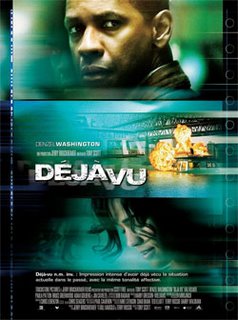"It is Such a Pleasure to Laugh at the Misfortunes of Others"
Comedy is such a subjective thing. I don't know how many times I've quoted Mel Brooks' line that "Tragedy is when I cut my finger; Comedy is when you fall down a man-hole and die." And, as we are all individuals, one person's Bringing Up Baby* is another's Dumb and Dumber.** I know lots of fine folks who loved Date Night (Steve Carell's previous live-action movie), but I wasn't among them.
My tastes in comedy are not sophisticated; a good spit-take or prat-fall will make me howl with laughter. I like Jerry Lewis, as his movies will be guaranteed to contain at least one instance where I laugh 'til tears come out of my eyes. And I like good word-play, as my love for all things Marxian and Woody will attest. What I don't laugh at is regurgitation—recycled humor that is expected to be laughed at because, hey, it was funny the last time. Thus, the charm of Mike Myers frequently eludes me. Now, Dinner for Schmucks—the latest film by the "Focker" and "Austin Powers" franchiser Jay Roach—he also directed the very fine HBO film Recount—is based on the French film Le Diner des Cons, so there is a French charm to it spoken with a flat American accent. An up-and-coming executive Tim Conrad (Paul Rudd) is welcomed into the higher echelon of the investment firm that employs him (run by Bruce Greenwood) by being invited to an executive dinner in which the firm's hoi-polloi bring along "idiots"—persons of a certain unique, and frequently inept, "talent" for the ridiculing entertainment of the host ("No mimes. It's a cliche"). Whoever has the best idiot is guaranteed a certain prestige position in the company, complete with corner-window office. The idea horrifies his gallery contractor girlfriend (Stephanie Szostak) and only reinforces her instinct to refuse Tim's frequent marriage proposals. He's just about to sacrifice his career and opt out of the dinner when Fate steps in front of his Porsche in the nerdly form of Barry Speck (Steve Carrell), an IRS drone whose hobby is to make bucolic fantasy dioramas using stuffed mouse road-kill, which he calls his "Mouse-terpieces." ***
Tim's destiny seems set, but the acquisition of the bone-head Speck turns his life upside-down in a series of "Incredible Mess" scenarios that seem to nullify everything he might gain from winning the dinner game. The film is a self-defeating trap that could have used a more harried leading man than Rudd (or more dead-pan, in which case, hey, Ron Livingston's in the cast!) that might have had more of a comedic pay-off, or at least have produced more dramatic risk out of the situations. As it is, everything feels a little safe, nowhere near creating the sort of comedic frisson this film so desperately needs.
For a movie specializing in cruel humor, it lobs only soft-balls, whether it's at the clutch of crazies at the dinner, a nastily predatory ex-girlfriend of Tim's (Lucy Punch), or the what-comes-around come-uppance of the stuffy execs. Everything should be more manic, more crazy, and have a few more bite-marks that actually draw blood.****
Points, though, for filling the cast with an array of good comedic talent including Kristen Schaal and Jemaine Clement of "Flight of the Conchords" (series and group, respectively), Zach Galifianakis, the afore-mentioned Livingston, and Larry Willmore. The improvisational power of the cast is formidable, and (like Date Night) it feels a little too improvised at times as there are so many scenes that are barely gelled. However, a business lunch that is the definition of "awkward" is a highlight, as is a conversation between Speck and Clement's self-absorbed satyr-like artiste ("There are only two things that matter in life: wonderful, visceral sexy sex...and Death"), that benefits from the two comedians' off-kilter rhythms to big pay-offs. Such moments are few and far between.
* ...which I love.
** ...at which I didn't crack a smile.
*** The most charming part of the film is the title sequence, set to The Beatles' "The Fool on the Hill," of Speck putting the finishing touches on an out-sized version of his hobby.
**** 2023 Update: Well, with that choice of words, maybe if they combined Dinner With Schmucks with The Menu. That would be...interesting? Maybe even "tasteless?"
"I hate tasteless!"





















































